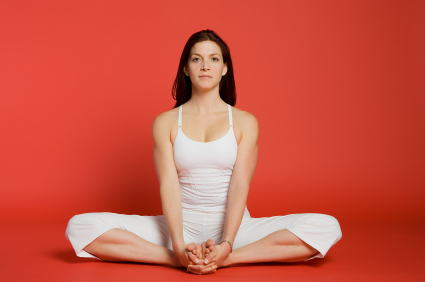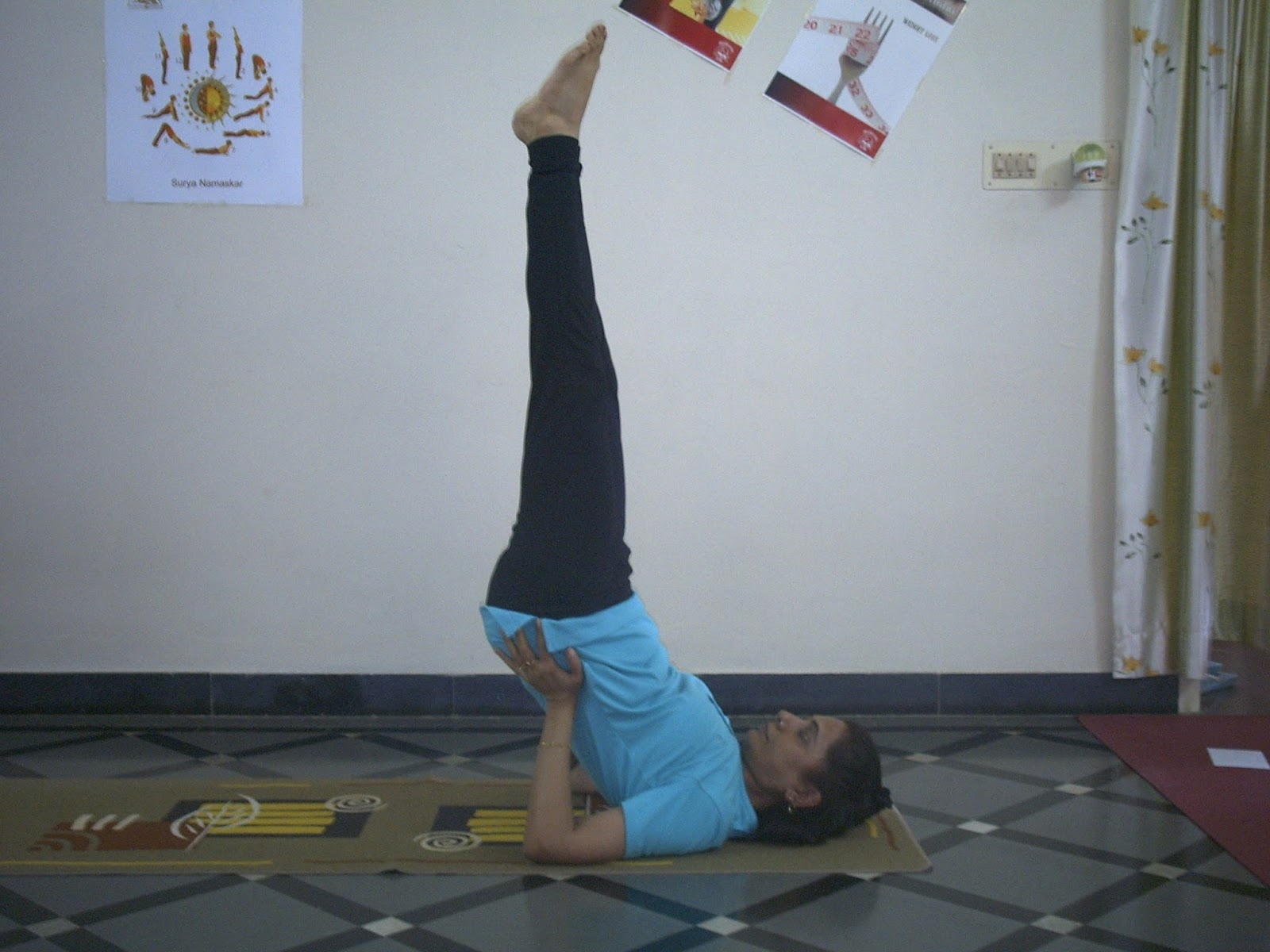By : Dr. Rita Khanna

Yogic Management of Sterility
Sterility which refers to the state of infertility is defined as an inability to conceive a child after trying to do so for at least one year. Sterility can affect both men and women, with the cause involving either one or both parties.
Both partners should consult a doctor in order to find out which of them requires treatment. For a man to be fertile, the testicles must produce enough healthy sperm to be ejaculated effectively into the woman’s vagina.
For a woman to be fertile, the ovaries must release healthy eggs regularly. In addition, her reproductive tract must allow the eggs and sperm to pass into her fallopian tubes to become fertilized and implanted in the uterus.
EXAMINATION
In the case of men, a general physical examination will be performed, with discussions concerning medical history, illnesses, disabilities, medications and sexual habits. Tests such as semen analysis, hormone testing, transrectal and scrotal ultrasound may also be performed. In case of women, a doctor investigates the endocrine problems.
Additional tests to determine sterility include blood tests, an ultrasound of the ovaries and hysterosalpingography to check for physical problems of the uterus and fallopian tubes.
A laparoscopy can check the ovaries, fallopian tubes and uterus for disease. Once a diagnosis has been made, you and your partner can consider the various treatment options.
YOGIC CAUSES
Sterility can be due to the couple’s state of health or due to psychological factors. Men who are too tense or nervous are unable to produce the spermatozoon required for fertilization.
The fear of being unable to conceive often prevents a woman from becoming pregnant. Unfortunately even today, in some countries including India, the entire blame for sterility is unjustly laid on women and they feel unduly guilty and this can be a source of despair. After proper Yoga exercises, proper diet and proper relaxation, so called infertile couples are able to have children.
YOGIC MANAGEMENT OF STERILITY
Yoga has been proven to reduce the production of stress hormones which can hamper conception. The study found that women who practiced Yoga were twice as likely to get pregnant than their female counterparts who did not practice Yoga.
When trying to conceive, I recommend a gentle flow practice with a focus on restorative poses. You do not need to avoid any particular poses but do skip hot, vigorous or dehydrating exercise.
Both partners are recommended to adopt a Yoga program and practice it together with the guidance of a qualified Yoga instructor.
The following are the Asanas including one Mudra and one Bandha which are recommended for fostering reproduction and combating sterility.
SHIRSHASANA: THE HEAD STAND
• By performing Shirshasna, the blood circulation is directed much towards the brain, thereby irrigating and regenerating not only this organ but the entire nervous system.
• Some of the most important endocrine glands situated in the area above the heart- hypophysis, pineal and thyroid , particularly the first two, are regenerated and maintained in perfect health by the head- stand.
• It provides a remedy for seminal weakness. Since the testicles are situated between the bladder and the rectum, if these become overfull, especially the rectum of people who are constipated, nocturnal emissions may take place.
• Shirshasana also helps prevent premature ejaculation where this is caused by congestion of the genital organs.
• It is also excellent for women suffering from certain uterine or ovarian troubles or from downward displacement of the womb.
• This posture helps combat psycho-somatic imbalances and ensures that the organs remain highly active.
• When practicing Shirshasana, begin by remaining in this posture for five seconds.Then gradually increase the length of time by fifteen seconds every week until a maximum of three minutes is reached. Be sure to practice this posture every day.
RESTRICTIONS
This Asana should in no circumstances be performed by those with hyper or hypotension, weak cervical vertebrae, by menstruating women and those suffering from heavy cold or have problems with their ears or eyes.
SARVANGASANA: THE SHOULDER STAND
• Sarvangasana is the Asana par excellence for counteracting the faulty functioning of the thyroid and parathyroid glands and for revitalizing them. Situated in the neck region, these glands play a part in the correct functioning of the metabolism, influence one’s state of mind and produce a considerable effect on the sexual maturing process. This delicate balance of hormones not only affects fertility but also menstruation.
• Like Shirshasana, it remedies seminal weakness in men arising from the degeneration of the testes and gives a beneficial effect on the uterus and ovaries in women.
• The exercise can be repeated once or twice in succession for fifteen seconds to three minutes gradually.
• The restrictions which apply to Shirshasna also apply to Sarvangasana.
VIPARITA KARNI: THE INVERTED POSITION

• This Asana is comparatively easier to perform than the Shirshasna and the Sarvangasna. All these inverted postures have a direct action on the brain, the thyroid and other endocrine glands and revitalize the entire organism. These Asanas produce a far-reaching action on the pelvic and sacro-lumbar regions as also on the abdominal organs.
• They improve the circulation, thereby producing a tonic effect on the nerves connected to the sexual organs and on the male and female reproductory glands.
• The exercise can be repeated once or twice in succession lasting for fifteen seconds to three minutes gradually.
• It should not be performed by those suffering from high blood pressure.
VARIATION OF THE ABOVE ASANAS: LEGS ON THE WALL
Legs-up-the-Wall Pose is calming and brings energy to the pelvis. It also helps to increase micro-circulation in the reproductive tract.
But most importantly, if practiced right after sex, it encourages the sperm to penetrate deeper into the female reproductive organs.
MATSYASANA: THE FISH POSE
• Matsyasana is the counter pose of all the above Asanas. This Asana greatly helps the correct functioning of the thyroid gland (producing a tonic effect on it) and the endocrine system. It also eases constipation and in case of women ensures a healthy uterus. It should be done for five seconds to one minute.
HALASANA: THE PLOUGH POSTURE
• This Asana tones up the nerves of the spine linked to the sexual organs and the neuro-muscular system of the pelvic region.
• This Asana strengthens the male and female reproductory glands.
• It also regenerates the thyroid gland.
• It combats dyspepsia and constipation and has a beneficial effect on the liver.
• It can be practiced two to three times in succession for the duration of five seconds to one minute.
• The restrictions which apply to Shirshasna also apply to Halasana.
BHUJANGASANA: THE COBRA POSE
• This posture helps the blood circulation, regenerates the spinal nerves, the sympathetic nervous system and remedies insomnia & obesity.
• This Asana helps correct irregular menstruation and ensures a healthy uterus.
• Bhujangasana is performed two to five times over a period of five to ten seconds.
SHALABHASANA AND ARDHA- SHALABHASANA: THE LOCUST POSE AND THE HALF LOCUST POSE
• These two postures produce a beneficial action on the urogential system, the stomach and the intestines.
• These Asanas correct functioning of the ovaries and that menstruation gets regular and painless.
• They should be practiced two to five times in succession for several seconds.
• The restrictions which apply to Shirshasna also apply to Shalabhasana.
DHANURASNA: THE BOW POSTURE
• This posture produces a tonic effect on the pelvic region and the digestive organs.
• It helps regenerate the male prostate gland and the endocrine glands and genital organs of both sexes.
• It is also recommended to women as a way of ensuring proper functioning of uterus and ovaries.
• Dhanurasana can be performed two to five times for five seconds.
The Cobra, Shalbh, Ardha Shalbh and Dhanur postures are excellent means of combating female sterility resulting from the poor functioning of the reproductive organs and irregular menstruation.
PASCHIMOTTANASANA: THE POSTERIOR STRETCHING POSTURE
• This posture revitalizes the nerves connected to the genital organs as well as the sexual glands of both sexes.
• It is recommended as a way of curing seminal weakness and controlling sexual energy.
• It is good for the sciatic nerve and especially beneficial to the sacro-lumbar, pelvic and abdominal region in which it tones up the blood circulation.
• Paschimottanansana is performed two to five times for five to ten seconds.
• This exercise should not be performed by those suffering from spinal problems
JANUSIRASANA: THE KNEE AND HEAD POSTURE
• This Asana promotes health to the prostrate gland and helps cure prostatic enlargement problems.
• In the case of women, this posture strengthens the uterine muscles and fallopian tubes while at the same time improving the functioning of the ovaries.
• In addition, this Asana is beneficial to the nerves of the spinal column which are linked to the genital organs.
• It is also good for the sciatic nerve and the sacro-lumbar and pelvic regions.
• Janusirasana should be repeated two to three times on either side for five seconds.
• The restrictions which apply to Pashimottanasana also apply to Janusirasana.
SUPTA-VAJRASANA: THE SUPINE PELVIC POSTURE
• This posture produces a highly revitalizing effect on the reproductive organs and the entire pelvic region.
• It is also a powerful means of fighting constipation.
• This Asana is performed two times in succession for fifteen to thirty seconds.
ARDHA-MATSYENDRASANA: THE HALF MATSYENDRA POSTURE
• This posture guards against enlargement of the prostate gland and continues to rejuvenate the spinal column and reproductive organs until quite late in life.
• It is effective against constipation and dyspepsia.
• It is vey effective against an enlarged and congested liver and spleen and revitalizes the functioning of the kidneys, bladder and genital organs.
• Ardha- Matsyendrasna should be performed two to three times in succession for five to fifteen seconds on either side.
BOUND ANGLE POSE: COBBLER’S POSE
This pose helps you stretch your hips and thighs. It increases circulation to the pelvic area, making this a great Yoga exercise to increase fertility and relieve menstrual pain.
BANDHA KONASANA: THE YOGA MUDRA FEET JOINED
• This posture stimulates the abdominal organs and the sacro-lumbar region and ensures the correct functioning of the sexual organs.
• It helps ensure regular menstruation and is recommended to those suffering from urinary problems.
• Bandha Konasana should be repeated two to three times in succession for five to ten seconds.
YOGA MUDRA: THE SYMBOL OF YOGA
• This Mudra stimulates the brain by provoking an influx of fresh blood.
• It has a rejuvenating effect on the coccygeal nerves and on the sacral and lumbar plexus.
• It ensures the correct functioning of the abdominal organs and combats constipation.
• It also revitalizes the male and female genital organs.
• This Mudra remedies nocturnal emission and seminal weakness.
• It fosters control of sexual energy.
• Yoga Mudra should be repeated two to three times in succession for five to ten seconds.
UDDIYANA-BANDHA: THE RAISING OF THE DIAPHRAGM
• Uddiyana Bandha revitalizes the sacral and solar (lumbar) plexus-the latter controls the principal internal organs. The solar plexus is a vital centre connected with the sympathetic nervous system. It is the place where our vital energy-Prana is stored. Solar plexus is the Sun of our nervous system.
• In addition, this Bandha helps purify the organism, stimulate the digestive organs and fight against constipation and dyspepsia. It ensures proper functioning of the liver, pancreas, suprarenal glands and genital organs.
• This Bandha may be repeated two to five times for five seconds.
• This should always be performed on an empty stomach and is not recommended to those with high or low blood pressure or with serious problems affecting the abdominal region.
The above Asanas, Mudra and the Bandha revitalize the sexual glands and organs, the thyroid, the nerves and other organs which play an important part in reproduction. Besides these, practice of Pranayama,Yoga nidra, Concentration and Meditation gives even better results. However, one cannot expect the body and reproductive organs to function correctly if one overworks, smokes, drinks too much tea, coffee or alcohol, takes drugs, fails to eat a balanced diet or indulges in emotional or sexual excess. Excessive emotion or passion is harmful, as you shall see in my next article.
TIPS FOR ENHANCING FERTILITY
• Conception is based on an intricate series of events. Every month, hormones from your pituitary gland stimulate your ovaries to release an egg or ovulate. Once the egg is released, it travels to one of the fallopian tubes. If you want to conceive, now’s the time. Have sex regularly around those dates.
• Use your day planner or another simple calendar to mark the day your period begins each month. Also track the number of days each period lasts. If you have a consistent 28-day cycle, ovulation is likely to begin about 14 days after the day your last period began.
• Keep a record of your basal body temperature to determine when you are ovulating. You can assume ovulation has occurred when the slightly higher temperature remains steady for three days or more.
• Check your vaginal mucus, if it has a stretchy consistency, then you are at your most fertile.
• Increase your supplement intake by taking folic acid, Vitamin B6 and B12 both before and during pregnancy.
• Eat healthily by adding lots of fresh fruit and vegetables as well as protein to your diet.
• Neti daily and laghoo shankhaprakshalana whenever constipation is present.
• Women should watch their weight as being too thin or overweight minimizes their chances of conceiving.
• Exercise regularly to maintain general health and well being.
• Men should wear boxer shorts and take cool baths to improve circulation around their testicles.
• Adequate rest and a change of environment away from pressures, responsibility and social and family commitments are important first steps.
• A restful and relaxing holiday in natural surroundings is highly recommended.




